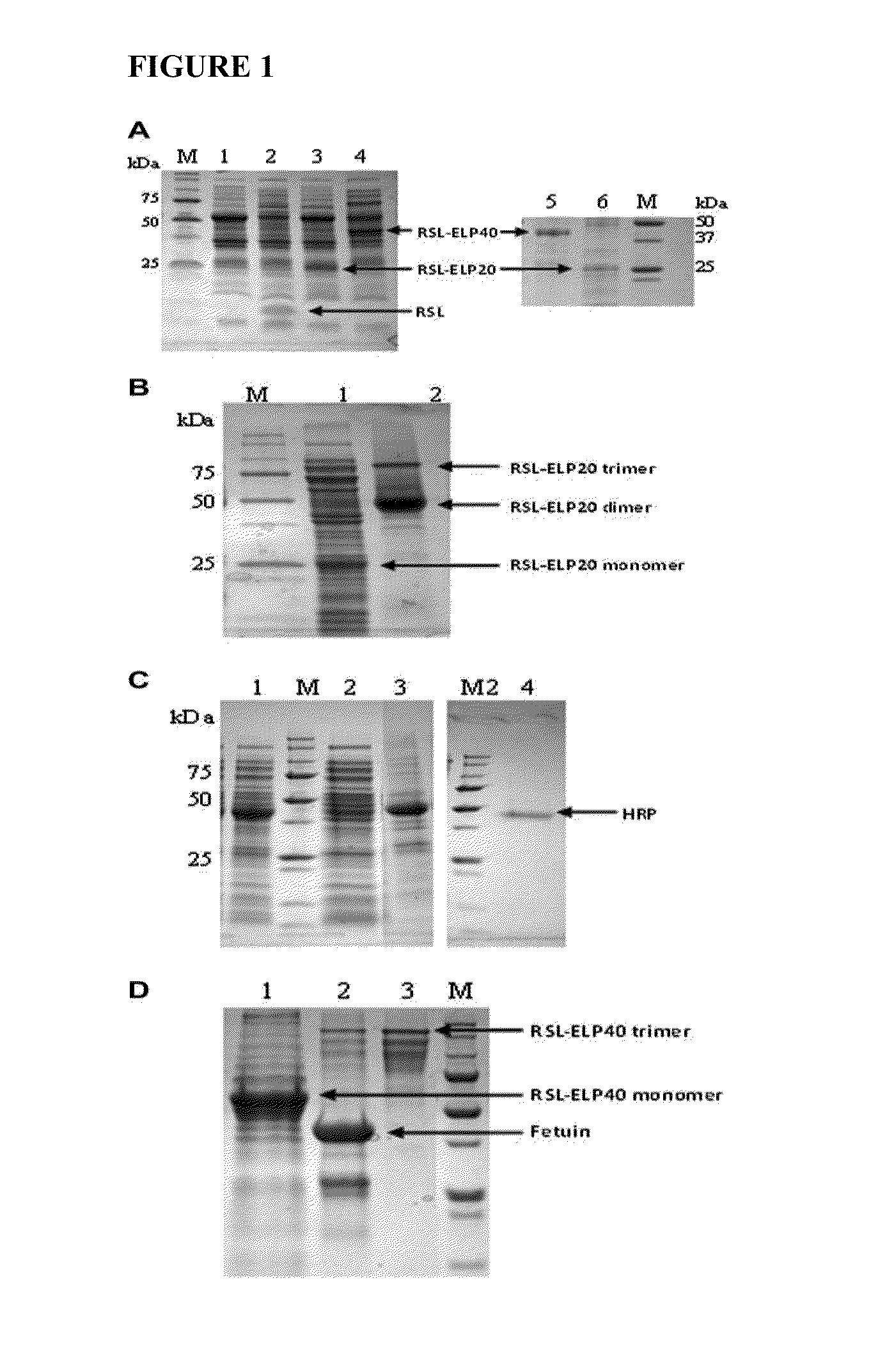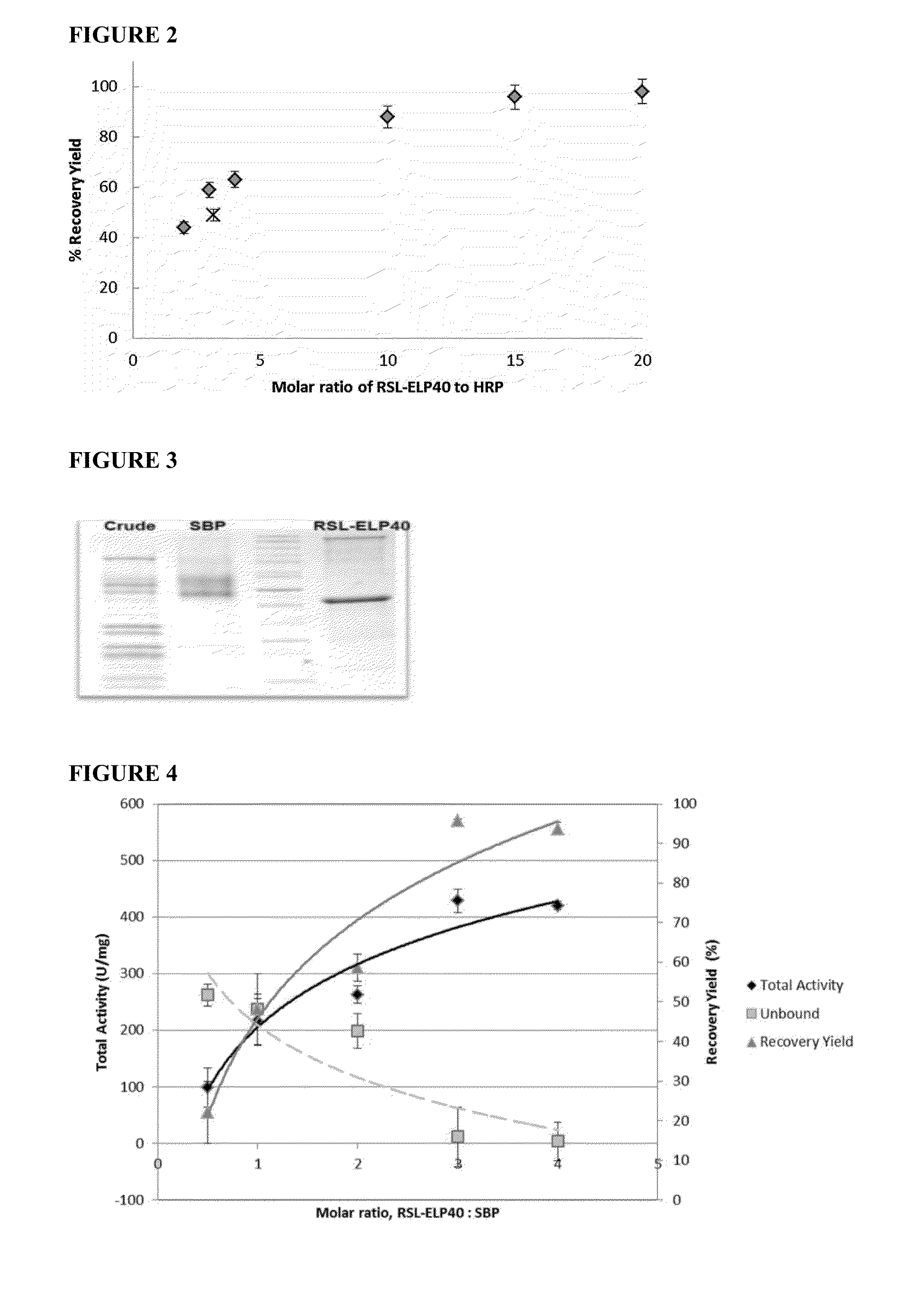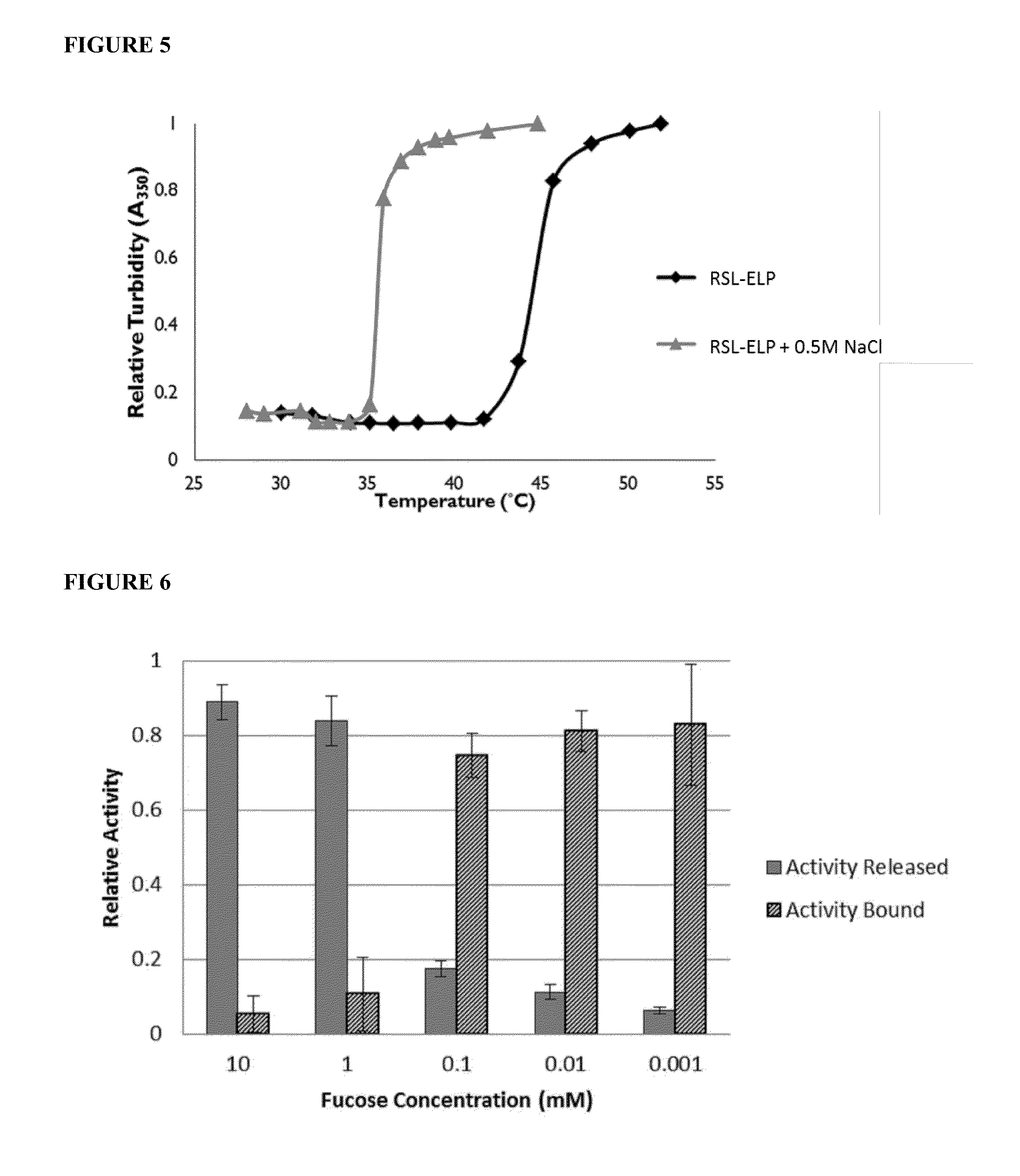Thermo-responsive lectin-elp fusion binding ligands for glycoprotein purification by affinity precipitation
a fusion binding and glycoprotein technology, applied in the field of thermoresponsive fusion binding ligands, can solve the problems of high cost of affinity ligand and column operation, flow rate limitation, diffusion constraints,
- Summary
- Abstract
- Description
- Claims
- Application Information
AI Technical Summary
Benefits of technology
Problems solved by technology
Method used
Image
Examples
example 1
Novel Thermo-Responsive Fucose Binding Ligands for Glycoprotein Purification by Affinity Precipitation
[0046]This example describes novel thermo-responsive affinity sugar binders that were developed by fusing a bacterial fucose lectin with a thermo-responsive polypeptide. These designer affinity ligands fusions were produced using an E. coli system capable of extracellular secretion of recombinant proteins and were isolated with a high recovery yield (95%) directly from growth medium by Inverse Temperature Cycling (ITC). With horse radish peroxidase (HRP) as a model protein, this example demonstrates that the designer thermo-responsive ligands are capable of interacting with glycans on a glycoprotein, a property that was used to develop a novel affinity precipitation method for glycoprotein purification. The invention method, requiring only simple process steps, affords full recovery of a target glycoprotein, and is effective at a very low target glycoprotein concentration in the pre...
example 2
One-Step Non-Chromatography Purification of a Low Abundant Fucosylated Protein from Complex Plant Crude Extract
[0074]Novel thermo-responsive sugar-binding ligands were developed by fusing a small bacterial fucose lectin with an ELP (See EXAMPLE 1 above). In this Example, the fucose-binding ligand was applied to isolate SBP, a fucosylated protein, from complex plant crude extract. This example demonstrates that affinity precipitation is particularly effective in purifying a low abundant protein from a complex mixture, resulting in >95% recovery yield and 22.7-fold purification in one step. The issue of affinity ligand regeneration and its reuse in the purification process were also addressed.
[0075]In this example, the newly-developed affinity ligand, a fusion protein of elastic like polymer (ELP) and a bacterial lectin, was applied in an affinity precipitation process to purify soybean peroxidase (SBP) based on the presence of fucose on the protein surface, and the challenge of purif...
example 3
Saialic Acid Binding Lectin Fusion Construct for Glycoprotein Purification by Affinity Precipitation
[0117]In an effort to expand the platform of the successful lectin-ELP fusion constructs, a new sialic acid binding lectin is produced as a fusion construct for the purpose of affinity precipitation purification.
[0118]Construction of VCNA-ELP40 Ligand.
[0119]This Vibrio cholera neuraminidase (VCNA) is comprised of three (3) distinct domains: a neuraminidase catalytic domain, and two flanking lectin regions (Crennell et al., 1994). Of these two lectin domains, the N-terminal lectin has been found to bind with high affinity to sialic acid (Kd of 30 μM) and similar affinity to sialic acid containing substrates, α-2,3-sialyllactose and α-2,6-sialyllactose (Moustafa et al., 2004). This 21 kD binding site is efficient in targeting terminal sialic acid moieties and does not require the addition of metal ions for binding. In the same manner as previous work with a fucose binding lectin, this l...
PUM
| Property | Measurement | Unit |
|---|---|---|
| Responsivity | aaaaa | aaaaa |
| Affinity | aaaaa | aaaaa |
Abstract
Description
Claims
Application Information
 Login to View More
Login to View More - R&D
- Intellectual Property
- Life Sciences
- Materials
- Tech Scout
- Unparalleled Data Quality
- Higher Quality Content
- 60% Fewer Hallucinations
Browse by: Latest US Patents, China's latest patents, Technical Efficacy Thesaurus, Application Domain, Technology Topic, Popular Technical Reports.
© 2025 PatSnap. All rights reserved.Legal|Privacy policy|Modern Slavery Act Transparency Statement|Sitemap|About US| Contact US: help@patsnap.com



